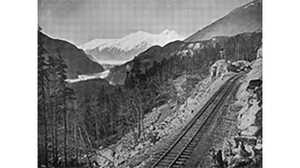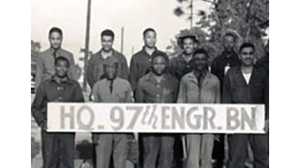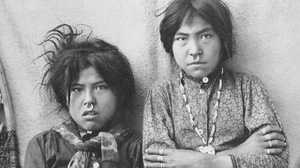Japan Invades the Aleutian Islands
After the assault on Pearl Harbor on December 7, 1941, Americans quickly became all too aware of their vulnerability. The Roosevelt administration feared that the Japanese would strike on American soil again, and homeland security became an immediate priority.

U.S. Territory Close to Japan
With their close proximity to Japan, the Aleutian Islands seemed especially prone to an attack. Stretching westward into the Pacific Ocean, the chain of roughly 150 islands lay just 750 miles away from the closest military base in Japan -- closer to Japan than to Seattle, Washington.
Poor State of Readiness
When Hawaii was attacked, Alaska was poorly prepared for an assault on its turf. Only six aircraft were functional. 21,945 military servicemen were stationed in garrisons throughout the territory, but these garrisons were separated by hundreds, sometimes thousands, of miles, and the lack of reliable land transportation made movement, communication and coordination difficult. The road-building project commenced in April 1942, just four months after Pearl Harbor.
Japanese Ambitions
Led by Admiral Isoroku Yamamoto, the Japanese did indeed hope to conquer the Pacific. Beginning with their attack on Pearl Harbor in December, the Japanese unleashed an assault on other Pacific lands, including Malaya, the Phillippines, Thailand and Burma.
Aleutian Attack
Then, in June 1942, the Japanese attacked the Aleutian Islands. Regional naval officers directed Japanese forces to bomb an American military base at Dutch Harbor, killing more than 100 Americans. Within a week, Japan's Northern Area Fleet pushed forward and seized the islands of Adak and Kiska, marking the first time that American territory had been occupied since the War of 1812.
Unwelcome Toehold
To Americans from Delaware to Oregon, Japan's arrival in the Aleutian Islands confirmed their worries about an invasion. Although remote, the Aleutian Islands were seen as a foothold to a possible invasion of the continental United States.
Naval Strategy
Directing an armada of 176 warships, Admiral Yamamoto hoped to use the invasion of the Aleutians to lure the North American naval forces, which were crippled after the attack on Pearl Harbor, into a fight. The Japanese thought that by diverting the American navy to the Aleutians, the major portion of Yamamoto's fleet could safely strike elsewhere in the Pacific.
Pacific Turning Point
On June 4, 1942, at nearly the same time the Japanese bombed Dutch Harbor, American and Japanese forces converged on Midway Island to fight the battle which would be seen later as the turning point of the war in the Pacific. Thanks in part to American code-breakers, Admiral Chester Nimitz and his armed forces were ready for battle. The heroes of Midway claimed major prizes from Yamamoto's armada, including four aircraft carriers and a cruiser, inflicting damage that would affect Japanese naval strength for the rest of the war. Still, the Japanese presence in the Aleutians remained as menacing as its activities elsewhere in the Pacific theater.
Fears in Alaska
While Japan played its offensive cards, the Army Corps of Engineers were hard at work constructing the Alaska Highway. News of the Aleutian invasion made the workers understandably nervous. In the climate of the day, rumors were difficult to separate from news. "Every Saturday and Sunday we had a brushfire somewhere that we had to go out and put out," recalled John Bollin, a worker on the Alaska Highway. "The propaganda was the Japs were setting off fire balloons to deter what we was doing."
Justified Road-Building
Japan's presence gave the highway's builders a greater sense of purpose, and critics of the project were easily silenced. In the face of Japanese occupation, the construction of a land route to supply military bases in Alaska now appeared to be crucial to most Americans.
The Changing Tide of 1943
By the time the Army Corps of Engineers completed the pioneer road of the Alaska Highway, in the late fall of 1942, the Japanese were still in the Aleutians. However, they were never able to muster enough strength to make a push from the Aleutians. In May 1943, U.S. forces attacked the Japanese on Attu. By the end of the month, the Japanese had retreated from the island, but not before demonstrations of their code of honor -- including mass suicides and take-no-prisoner battles to the death -- convinced Americans that they were fighting an unrelenting enemy.
Threat Dissolved
In late July, the Japanese discreetly withdrew from the island of Kiska, ending the nearly one year occupation of the Aleutian Islands. An invasion of the continental United States seemed less likely, and the urgency and importance of the Alaska Highway faded.
Military Installations as Insurance
However, the highway's presence helped reassure Americans. As Dr. Ken Coates explained, "For the Allied powers the Alaska Highway could have been absolutely central. The vast majority of military bases are never really used for their intended purpose. They're there because they might be necessary -- You might need this fort, you might need this airfield... you might need a highway to Alaska."







